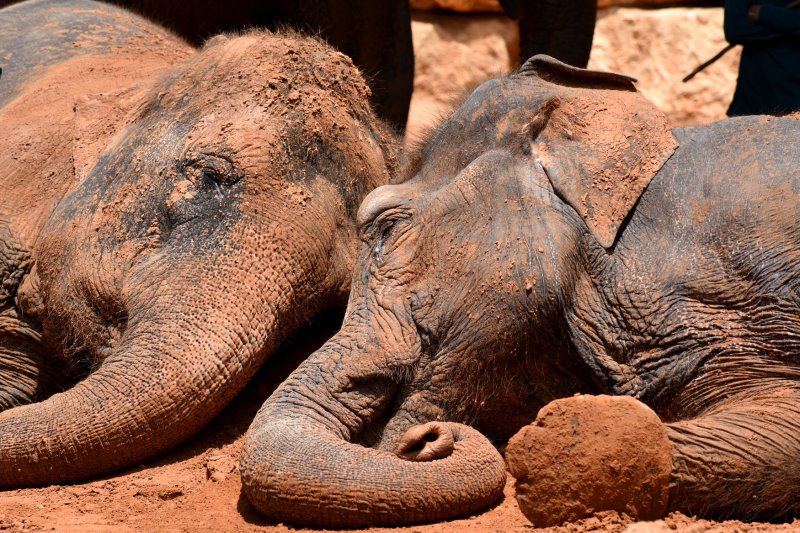Models suggest the size of the ideal mammal -- most resilient against starvation and extinction -- would be 2.5 times the size of an elephant. Photo by Debbie Hill/UPI |
License Photo
Feb. 13 (UPI) -- Most extinction models are relatively simple, comparing reproductive rates with the density of available resources. New research shows more complex models that account for body size are better able to simulate animals' ecological fate and gauge extinction risks.
When ecologists at the Santa Fe Institute incorporated body size and metabolic rate into their model's calculations, they found their simulation offered a more nuanced -- and realistic -- picture of local ecosystems.
The new research -- published this week in the journal Nature Communications -- offered scientists a better understanding of why most animals tend to evolve larger body sizes.
"Unlike many previous forager models, this one accounts for body size and metabolic scaling," biologist Chris Kempes said in a news release. "It allows for predictions about extinction risk, and also gives us a systematic way of assessing how far populations are from their most stable states."
Like the standard models, the new models are based on the understanding that fate of a species is dictated by an energy threshold. If a species can't consume enough resources -- and secure energy -- they won't be able to effectively reproduce and increase the size of their population.
But research has shown these basic ecological dynamics are affected by the size of animals and their metabolism. When scientists updated their models to reflect this reality, they identified several patterns observed in nature.
"As we incorporated more realism into how quickly organisms gain or lose body fat as they find or don't find resources, the results of our model began aligning with large-scale ecological and evolutionary relationships," said Justin Yeakel, an ecologist at the University of California, Merced.
The models show smaller animals can maintain larger populations, while larger animals are more stable in smaller numbers. The research also predicted an ideal mammal size. An animal roughly 2.5 times the size of an African elephant would be the least likely to starve, simulations showed.
The model still has room for improvement. It doesn't account for predation. But advances in statistical models are making it possible to account for a variety of ecological factors.
Still, the latest improvements have offered a solid systematic framework on which to build off of.
"The dynamics of foraging and the interaction of body size in foraging and resource availability, these are all rich problems for which there is beautiful phenomenology," said Sidney Redner, physicist at the Santa Fe Institute. "I hope some of this will have relevance in managing resources and ensuring species don't go extinct."















